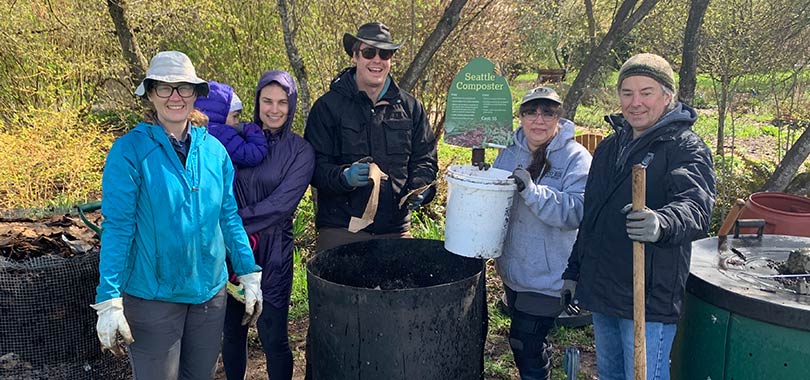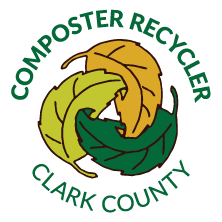Composting is a way to turn your yard and kitchen wastes into soil and keep valuable nutrients cycling rather than sending them to the dead-end landfill. In return you get a wonderful Nature's miracle grow fertilizer for your yard and garden.
We offer workshops and demonstrations on how to feed the soil rather than the landfill.

Backyard Composting
There are many systems for composting yard and kitchen waste in your backyard. You can visit one of our composting demonstration sites to see various bins and systems in use.
The two basic backyard composting methods are fast— batch or hot composting, and slow— add as you go or cold composting. Mother nature doesn’t care which one you use. But you might! With the faster hot composting method, the end product can be higher quality— but the amount of work needed to turn and monitor your pile is more. With cold composting, not as much work is needed, but it can take several months to a year to get usable compost.
SMART is an acronym for the compost factors you should pay attention to for best results:
S:
|
The size of your pile and the pieces you put in it. Your pile should be at least 3 x 3 x 3 feet in volume (for a hot pile). Your woody pieces of material should be chopped up to less than 2″ in diameter. |
|---|---|
M:
|
Keep the pile moist as a wrung out sponge. You can mist it with a hose as you add new material. |
A:
|
Turn your compost occasionally. You want oxygen to get into the pile, and to get the materials mixed. Serious composters try to get the pile hot — and turn it once the temperature drops. |
R:
|
The ratio of “browns” to “greens” should be an average of Carbon/Nitrogen 30:1. An easy way to measure this is to go by volume — and use 1:1. One unit of brown to one of green. An easy way to remember this is “equal parts of green and brown help to break the compost down.” |
T:
|
Find the best compost system for you and recommendations on best tools for the trade. |
Backyard Composting
- Backyard Composting infosheet
- Backyard Composting PPT Slides
- Backyard Compost Materials Guide
- Backyard Compost FAQs
Lasagna Composting
- Lasagna Gardening
- Lasagna Garden Composting worskhop PowerPoint
- HugelKultur
- Lasagna Garden Composting
Redworm Composting
- Worm Bin Composting infosheet
- Redworm Composting PPT Slides
- Instructions for constructing your own wood worm bin
- DIY video on how to build a worm bin from plastic totes
- Worm Bin Composting FAQ
Red wigglers (Eisenia fetida) are the worm of choice for home vermicomposting. There are a number of local resources in the Clark County area to purchase redworms. It’s always a good idea to call ahead for availability and pricing. One half pound is typically a good amount to start a worm bin with.
If you want to purchase redworms elsewhere, we recommend you enter “buy redworms” in your search engine to find the best source and price for you.
Happy Composting!



